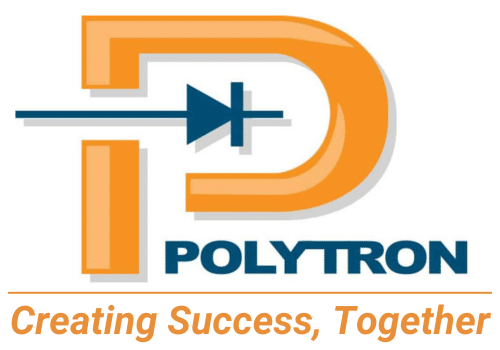Volatile cooking oil prices were creating an unsustainable expense structure for a snack food manufacturer, leading to the inability to maintain market share, loss of manufacturing flexibility, declining product quality, and the need for cost-cutting measures.
To take advantage of price fluctuations, selecting oils based on the cost and accurately blending oils at each manufacturing site would be significantly more cost effective.
A new blending system allowed the plants to blend oils from its existing oil storage at highly accurate ratios and send it directly to the fryers. The in-line blending control system hardware was delivered and implemented, equipment was supplied, mechanical and electrical support was provided, and construction management training was given to each of the 27 sites. The turnkey program was a costeffective solution that maintained the highest level of product quality.
Challenge |
Solution |
Results |
| Volatile food oil prices were creating an unsustainable expense structure | Implement in-line blending to reduce expenses
Employ control algorithms to provide ingredient flexibility and take advantage of market price fluctuations Schedule implementation to minimize impact on production |
Solution was implemented at 27 sites within 15-month timeframe, with minimal downtime
Accuracy of the in-line blending solution allowed manufacturer to reduce costs while maintaining product quality Delivered within budget |
The Project
Commodity Price Fluctuations Increases Costs
Fluctuating commodity prices for cooking oils were driving up costs for a global snack food manufacturer. The company’s corporate engineering manager knew that, left unchecked, volatile oil prices could lead to a variety of risks:
- A loss of manufacturing flexibility
- Declining product quality
- An inability to maintain market share
- The need for cost-cutting measures, including the possibility of a reduction in force (RIF)
The engineering manager also recognized the potential to take better advantage of price fluctuations by selecting oils based on their price, which could potentially be a huge cost saver.

Challenge: Maintaining Quality Control and Product Flavor
Another expensive challenge was the oil preblending aspect of the manufacturing process, which required double handling – and was taking a big bite out of profits. Because not all suppliers process all oils, the manufacturer needed to ship the oil between processing sites before transporting to one of its 27 manufacturing sites. This increased the cost of the oil and expanded time required for delivery of the blended oil.
The engineering manager needed a more cost effective process to accurately blend oils at each manufacturing site.
The option to implement a new blending system offered a potential solution to these challenges, but project requirements created hurdles of their own:
- Blend ratio: The solution must provide precise controls to meet nutritional statements for labeling. Also, the product’s taste must be right – under no circumstances could consumer trust be violated. The solution had to provide flexibility to leverage variability of supply and cost of oils.
- Minimize effect to production efficiency: The solution must be transparent to the existing oil supply system controls and process controls. In addition, with all plants running near continuous operation, installation downtime window must fit within current production schedules.
- Cost: Capital requirements must be minimized to maximize the internal rate of return (IRR).
- Limited timeframe: The blend system must be in full operation within 15 months.
- Maintain oil quality: Develop control algorithms for the In-line blending system.
Solution: Develop a Turnkey Program to Meet Manufacturer Goals and Objectives
Polytron was called on to deliver and implement the in-line blending control system hardware, provide equipment supply, mechanical and electrical support, construction management and training for each of the 27 sites in the United States.
In phase one, an in-line blending system was implemented for multiple potato chip lines distributed in sites across the United States. Polytron created project teams that jumped from site to site, gathering information at each site to develop construction and implementation plans.
The second phase was the implementation of skid mounted in-line blending systems at additional facilities for other product lines.
Polytron’s Multifunctional Project Management Team
The Project Management team, which included process engineers, controls, construction managers and trainers successfully conducted the project. As needed, Polytron engineer and construction managers traveled to each site to:
- Conduct audits, develop preliminary installation plans and ultimately formalize findings into an implementation plan which was reviewed with the client’s corporate engineering and plant leadership.
- Develop implementation plans for construction of new oil silo(s) and delivery systems where needed.
- Oversee system construction and manage contractors to ensure tie-ins were made and construction was completed within downtime windows.
Minimizing Scheduling Risks
System construction usually occurred during off hours – often on successive weekends — or during planned downtime to minimize production impact.
Polytron used three implementation teams to minimize schedule risks. These teams “leapfrogged” each other, giving each team time to start up a system, deal with issues, and get prepared for the next implementation.
The final challenge was the training of maintenance and operations personnel at all sites on the use and care of the new blend systems. Polytron worked with the customer to develop a training program, training documentation, and rollout plan to deliver formal training at all sites.
Results: Low Capital Cost, High Accuracy and Short Lead Time
The new blending system allowed each plant to blend oils from its existing oil storage systems at highly accurate ratios, and send it directly to the fryers. The flexible nature of the system enabled blend adjustments to take advantage of changes in commodity pricing and accurately shift oil ratios.
The systems were rolled out to all production sites in approximately 14 months. Production sites were started up on time, and interruptions to planned production were minimized.
The system met the manufacturer’s needs for a cost-effective solution. The turnkey program deployed by Polytron, met their needs for low capital cost, high accuracy and short lead-time – while also maintaining the highest level of product quality
In-Line Blending Control System Hardware
Managing fluctuating commodity costs and minimizing downtime at a 24/7 plant, while maintaining recipe quality control and installing a new blending system can be made simple with a system integrator.
By installing in-line blending control system hardware, Polytron helps food manufacturers achieve their perfect blend by completely modifying methods already in use. The control system software blends precisely to maintain product integrity and taste, while getting the appropriate amount of the commodities at the right price.




